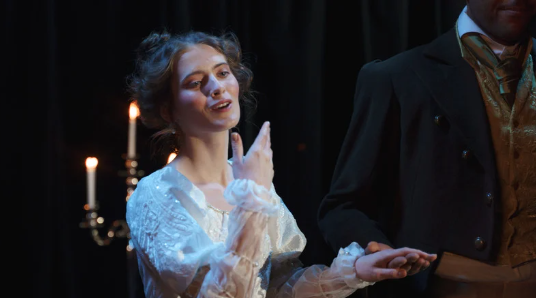
By Heather B. Moore
Some people love research, while others don’t. They want to get into the meat of writing as soon as possible. But if you’re planning to write a historical novel or other project, research is vital to developing the story and bringing credibility to your work. As the author of dozens of historical novels set in eras ranging from ancient Israel, Mesopotamia, the Georgian era, the Regency era, the Victorian era, the early 1900s, World War II, the early Cold War era, and the 1980s (yes, that’s considered historical now), I’ve learned a few tips and tricks to help me tackle each project as it comes along.
Search for Sources
I search on Amazon or other new/used book sites and decide if there are books that I’d like to own so I can have them constantly at my fingertips. If possible, I like to get the paperback version to annotate, the ebook version to do a quick search for a particular key element, and sometimes the audiobook to immerse my brain in the era. I own all three versions of some research books. You can also search Google Books and find older digital books that are absolutely free. YouTube has recently become a key source for me with the plethora of documentaries and shorter historical pieces that are available.
Determine Which Sources to Use
Since you can’t read every book written about a subject (unless there are only a few), you might have to be selective. On average, I read five-ten books about a historical subject in preparation to write a book. Some sources are a gold mine. Other sources might just be more of a quick reference to verify the uniforms worn by a particular army during a specific war. Online articles (including Wikipedia) can be great quick go-tos. You can check at the bottom of the articles as well for further sources as needed.
Research Key Elements
Don’t try to be the expert, but research enough to flesh out your story and bring authenticity. You probably don’t have ten years to research everything you can about Italy in the seventeenth century, but you can zero in on several key elements, situations, and cultural points in order to create a vibrant story that makes the reader feel as if they’re looking into the era through a camera lens.
What are these key elements? Start with the five senses.
- Touch—what do things feel like? Are your characters sitting on stone benches? Bamboo chairs? Scratchy woolen blankets?
- Sight—what is your character seeing? A bombed city? A river meandering through hills covered in small wooden huts? Tropical trees? Sand and rocks?
- Hearing—what sounds are in the setting? The puttering of a small vehicle? The clattering of horses’ hooves on cobblestone?
- Smell—does your character live on a farm? By the ocean with the scent of sea breeze as a constant companion? Is it spring with blossoming fruit trees?
- Taste—what kinds of food surround your character? Do they spend their days in preparation? Is food a main part of their day? What plants and crops are native to the country you’re writing about?
More elements include:
- Major historical events during your story’s timeline. You can’t ignore a major historical event (or weather event, for that matter) if your story covers that day/week/month/year. If for some reason, you do decide to ignore or brush over a major event, document the reason why in your chapter notes or an author note as a disclaimer.
- Government/politics. Just as our modern lives are framed by the laws of our land, so are historical characters’ lives. What types of laws were in place? How were criminals dealt with? Were there discrepancies between the sexes or racial groups?
- Religion. Even if your character isn’t religious, others around them will be. Religious beliefs can also be a major character motivator, so make sure you aren’t skipping over it in a main character or sub character.
- Setting. A historical setting becomes a character of its own. By writing about the past, you are researching old information instead of brainstorming new ideas and inventing new things, like you would for sci-fi or fantasy. The setting can affect characters’ choices and motivations. A story set in the middle of a Minnesota winter has a completely different feel than one set in sunny San Diego.
- Dialogue. This can be debated both ways, but generally keeping your dialogue free of modern cliches is very important. Most readers don’t want to read formal, stilted, cumbersome dialect, so find a handful of words that will keep your reader immersed in the historical era. Depending on your time frame, instead of “kitchen,” you might say “cooking room,” or instead of “bedroom,” you might use the more historical-sounding “bedchamber.”
Start Writing
You don’t need wait to write until you have done your research. Doing both at the same time is often necessary. I’ll typically start with research—reading sources and taking notes—and when I feel like I can effectively write the first few chapters of the book, I’ll begin writing, knowing there might be some stopping points along the way to deep dive into more sources. I try not to write too far ahead of my research, though, or I run the risk of writing an entire scene that has to be greatly revised.
Everyone’s method will vary, but hopefully something from my journey will be useful to you.

Heather B. Moore
Heather B. Moore is a USA Today bestselling author of more than ninety publications, primarily historical and #herstory fiction about the humanity and heroism of the everyday person. She attended Cairo American College in Egypt and the Anglican School of Jerusalem in Israel. Despite failing her high school AP English exam, Heather persevered and earned a Bachelor of Science degree from Brigham Young University in something other than English. Heather dives into the hearts and souls of her characters, meshing her love of research with her love of storytelling. You can learn more about her on her website.




I’m writing my first historical fiction novel. This was a good refresher for me. Thank you!
Great! Good luck with your novel 🙂